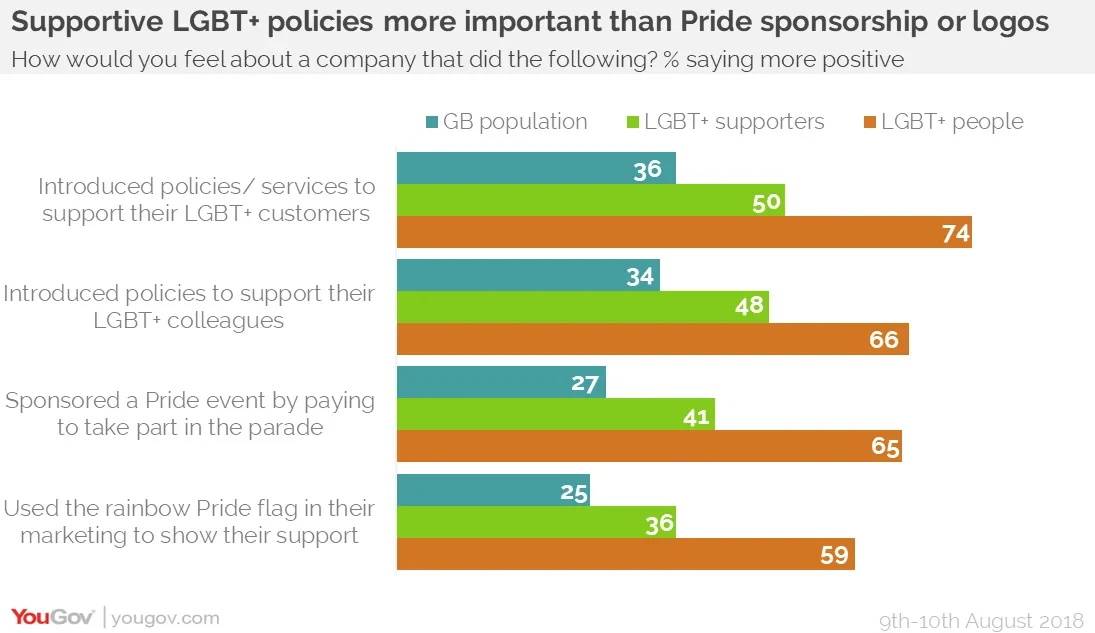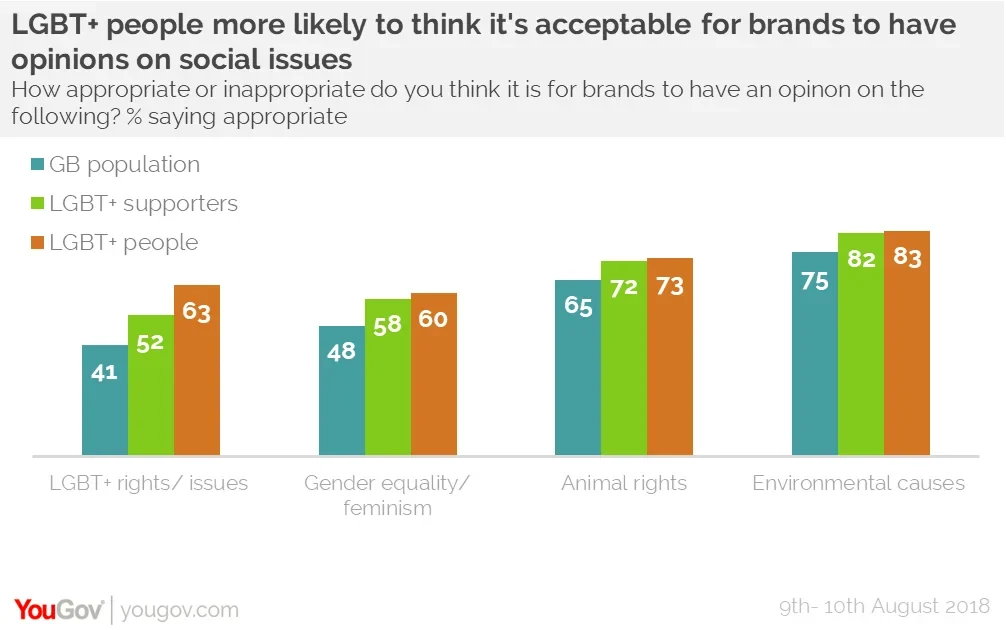We asked Brits how positive they feel towards brands that participate in Pride-related marketing activities.
With 69% of the GB adult population supporting LGBT+ rights, it’s no surprise that many brands and companies have “come out” to nail their colours to the mast in support.
Over 400 companies sponsored or paid to take part in the Pride march in London this year, and with new Pride events popping up around the country, the traditional “Pride heartlands” of Brighton, London and Manchester are no longer the only stomping grounds for LGBT+ supporters and companies wishing to appeal to the LGBT+ market.
But how are brands’ activities perceived by the general public, LGBT+ supporters (i.e. those who told us they support LGBT+ rights), and LGBT+ people themselves?
Only a quarter (25%) of Brits would view a brand more positively for using the Pride flag in their marketing, and 27% would have a more positive perception if the brand sponsored a Pride event.
Among those who say they support LGBT+ rights, this increases to 36% and 41% respectively, and unsurprisingly these figures rise even further among LGBT+ people themselves (59% and 65%).
However, across the board a greater number of people would be more impressed by a company that introduced policies actively supporting LGBT+ employees or customers.

Beyond Pride
The data suggests that brands looking to genuinely resonate with the LGBT+ community should also consider how they approach social issues more generally.
LGBT+ people, as well as those who support LGBT+ rights, are more likely than the general population to believe that it’s appropriate for brands to have an opinion on topics such as gender equality, animal rights, and the environment.

What’s more, when it comes to choosing which brands to buy from, LGBT+ people are more concerned than the public as a whole about: how fairly staff and customers are treated (34% vs 27%), whether a brand or company’s values align with their own (22% vs 15%), and whether a company’s goods or services are ethically sourced (30% vs 22%).
Image Getty









